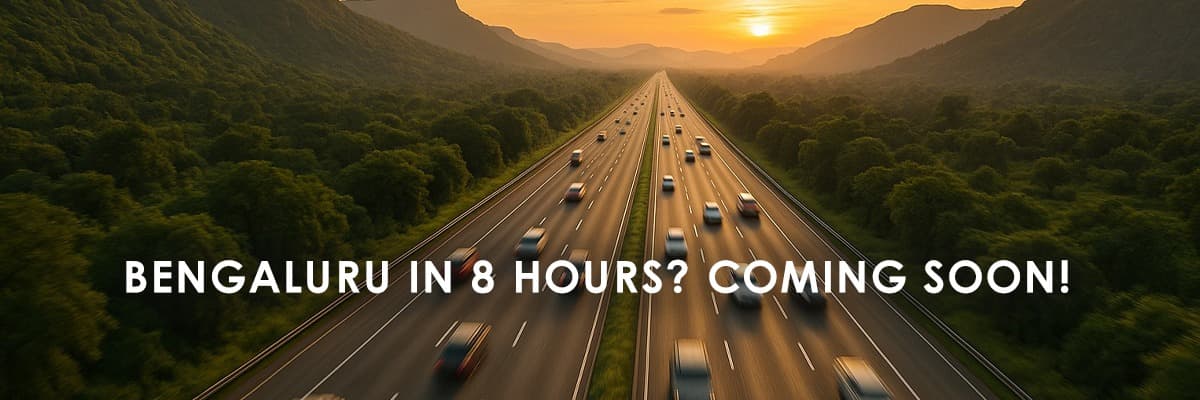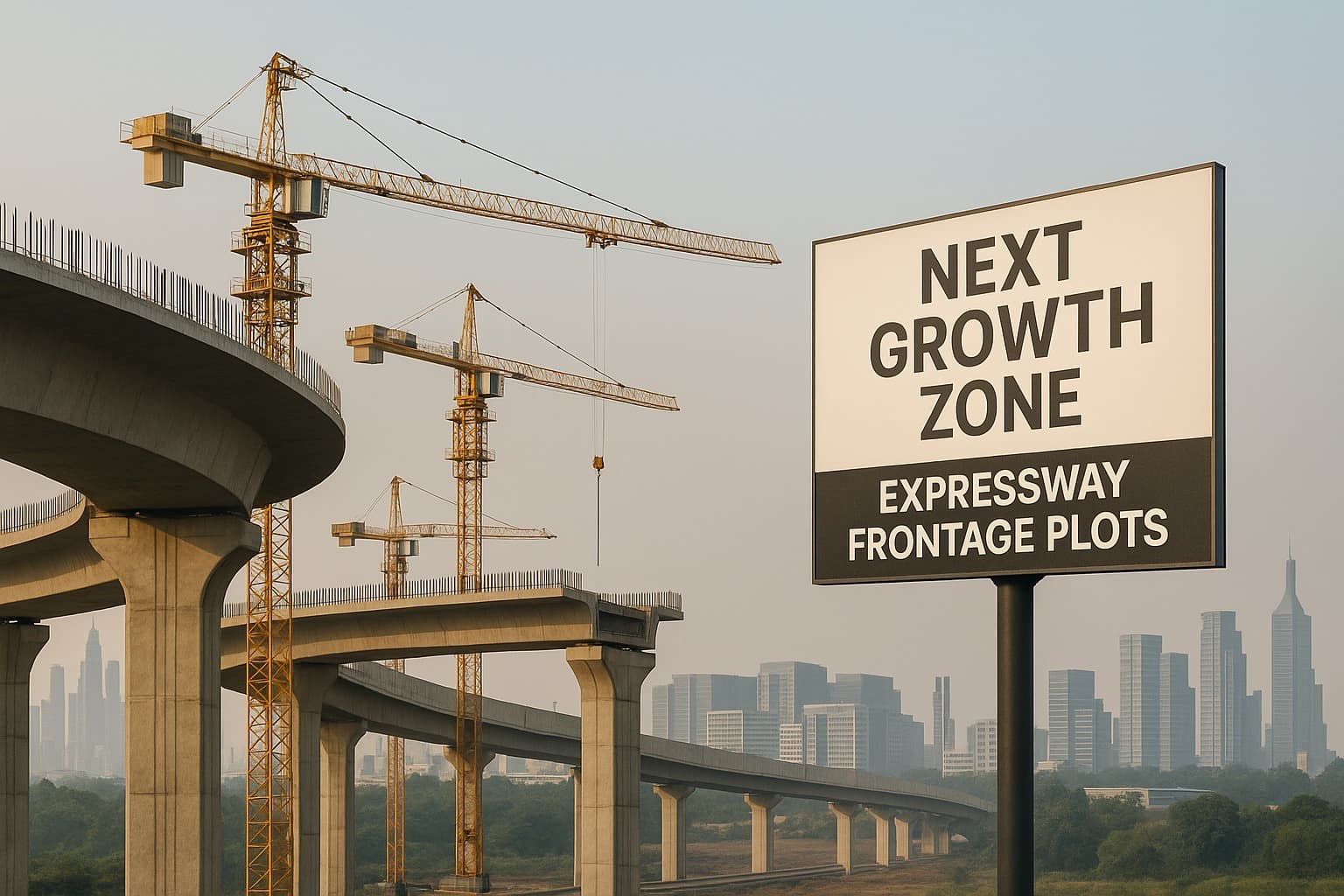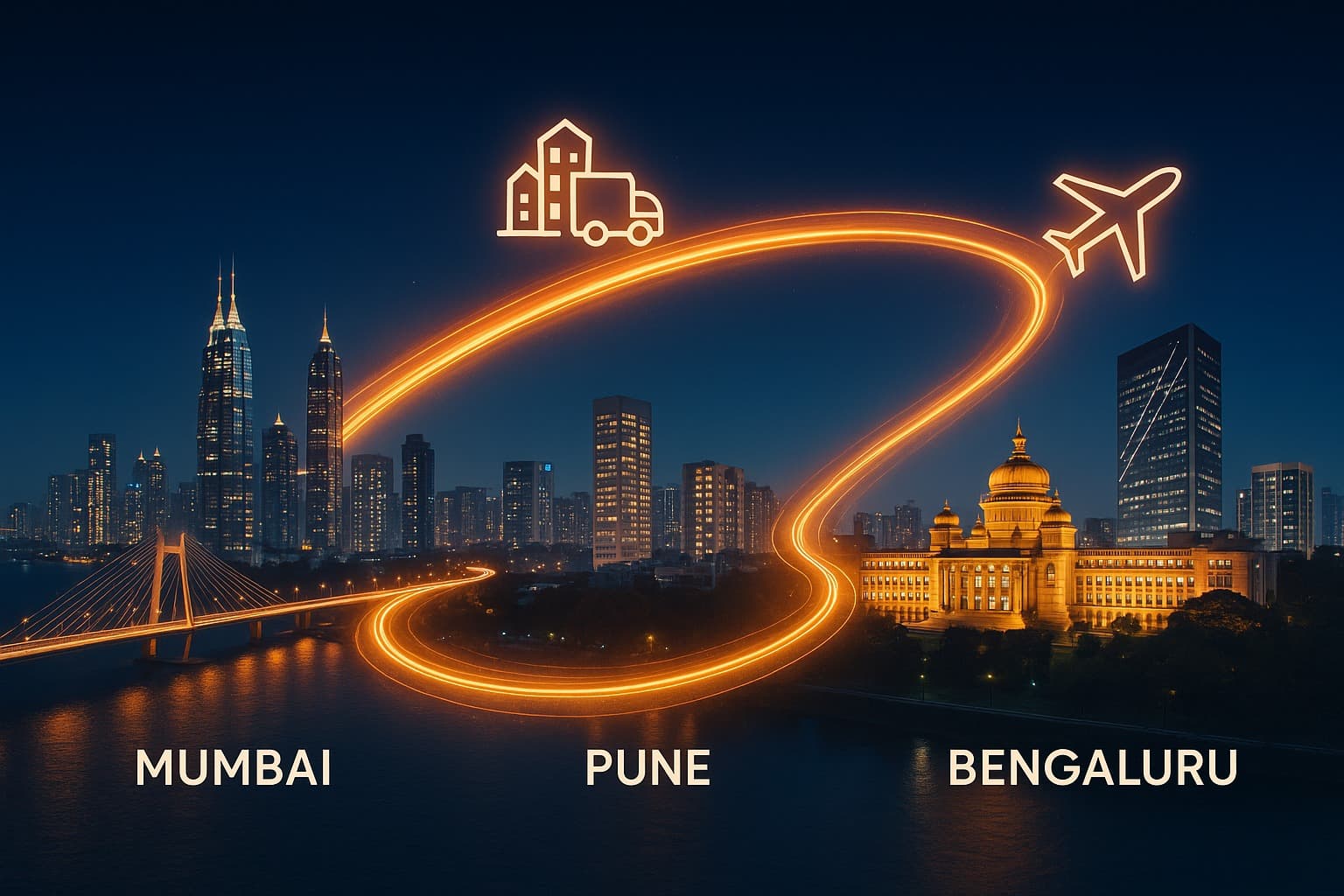Mumbai–Pune–Bengaluru Expressway 2025: Transforming Travel, Business, and Real Estate
Summary
The Mumbai-Pune-Bengaluru Expressway, slated for completion by 2032, will revolutionize travel, business, and real estate. This 1200km corridor connects economic hubs, reduces travel time, and unlocks investment potential.

India’s infrastructure story is entering a new golden era, and one of the most ambitious projects leading this transformation is the Mumbai–Pune–Bengaluru Expressway. While India has witnessed many highway projects, this expressway stands apart—not just in scale or cost, but in the profound impact it promises on travel, commerce, and real estate. Slated for completion in the next decade, this mega corridor is more than concrete and asphalt; it’s a lifeline connecting cities, economies, and people.
For decades, traveling from Mumbai to Bengaluru has been a long, tiring, and unpredictable journey. Even with the Mumbai–Pune Expressway, a journey beyond Pune has been slow and challenging. With this new expressway, the travel narrative is set to change forever.
A Visionary Project: Connecting India’s Economic Hubs
The Mumbai–Pune–Bengaluru Expressway is designed to link three major economic powerhouses: Mumbai, Pune, and Bengaluru. Each city has its own story—Mumbai is India’s commercial and financial capital, Pune a thriving hub for IT and manufacturing, and Bengaluru the country’s Silicon Valley. The expressway acts as a fast, seamless artery connecting these vibrant centers, opening opportunities for business, trade, and real estate development along the corridor.
Project Highlights:
Estimated Cost: ₹85,000–90,000 crore
Length: Approximately 1,200 km
Lanes: 6–8 lanes with service roads for local connectivity
Key Features: Toll plazas, rest areas, fuel stations, and emergency services
Timeline: Construction starts in 2025, with phased completion expected by 2032
Travel Revolution: Making Long Distances Feel Short
Imagine cutting your travel time from Mumbai to Bengaluru almost in half. Currently, this journey can take 16–18 hours by road. The new expressway will reduce this to 8–9 hours, depending on stops.
For daily commuters, business travelers, or families planning weekend trips, this is a life-changing shift. Less time on the road means more time with family, reduced stress, and more opportunities to enjoy the cities we live in.
Moreover, the expressway is designed with modern safety features, including medians, high-quality lighting, signage, and emergency response systems, which will make road travel significantly safer.
Economic Growth: A Corridor of Opportunities
Infrastructure is the backbone of economic growth, and this expressway will serve as a powerful growth engine for both Maharashtra and Karnataka.
Business Benefits
Industrial Clusters: Areas along the corridor such as Chakan, Talegaon, Satara, Tumkur, and Hosur are expected to attract more industries, warehouses, and logistics hubs.
Job Creation: Both direct employment during construction and indirect employment in retail, hospitality, and services will grow substantially.

Trade Acceleration: Faster, more efficient transport of goods will reduce costs for manufacturers and traders, benefiting sectors like automotive, IT hardware, textiles, and pharmaceuticals.
The expressway isn’t just about moving people—it’s about moving economies forward, creating a ripple effect that touches millions of lives.
Real Estate: Unlocking Investment Potential
The history of major infrastructure projects in India shows a clear trend: proximity to expressways boosts real estate value.
Key Zones for Investors
Near Pune: Talegaon, Chakan, and Hinjewadi are poised for both residential and commercial growth. IT professionals and industrial workers will look for convenient housing, driving demand for apartments and plots.
Near Mumbai: Lonavala and Panvel could witness an uptick in weekend homes, resorts, and commercial properties.
Near Bengaluru: Tumkur, Hosur, and Devanahalli will benefit from industrial expansion and residential growth catering to Bengaluru’s workforce.
Properties close to expressway exits and interchanges are likely to see the highest appreciation. For investors, this is a rare opportunity to get in early along a transformative corridor.
Lifestyle Transformation: Beyond Commute
The expressway promises not only faster travel but also enhanced quality of life:
Time for Family: Less time commuting means more time for loved ones and leisure.
Weekend Getaways: Mumbai residents can easily reach Pune or even Bengaluru for leisure trips.
Environmental Impact: Smooth traffic flow reduces fuel consumption and carbon emissions.
Urban Development: Smaller towns along the corridor gain access to jobs, education, healthcare, and modern amenities.
The expressway shrinks distances, making long cities feel close and creating new lifestyle possibilities.
2025 Status: Moving from Vision to Reality
As of 2025:
Planning Stage Completed: Detailed Project Reports (DPRs) are finalized, mapping stations, exits, and facilities.
Funding Secured: A combination of government and private investments ensures readiness.

Land Acquisition & Surveys: Preparatory work is ongoing across Maharashtra and Karnataka.
Construction Timeline: Phased construction to begin in late 2025, with segments opening in the coming years.
Even during early phases, businesses, developers, and investors are positioning themselves along the corridor, recognizing the enormous potential this expressway holds.
Challenges to Overcome
Like any mega project, challenges exist:
Land Acquisition: Negotiating and acquiring land across multiple districts and states can be complex.
Environmental Concerns: The corridor passes through ecologically sensitive areas, requiring careful planning and mitigation.
Budget Management: With a project of ₹85,000–90,000 crore, cost control and resource management are crucial.
Maintenance: Long-term upkeep and quality assurance will be key to sustaining safety and efficiency.
Despite these hurdles, political will, private investment, and public enthusiasm make success highly likely.
Conclusion: A Road to Transformation
The Mumbai–Pune–Bengaluru Expressway 2025 is more than a road—it’s a vision for India’s future. It will redefine travel, stimulate business, boost property values, and improve daily life for millions of people.
For residents, it means shorter commutes, safer travel, and better quality of life. For businesses, it promises speed, efficiency, and new markets. For investors, it presents one of the rarest opportunities to invest in high-growth real estate before values soar.
This expressway is a testament to India’s ambition, innovation, and drive toward connected, efficient, and modern urban living. By 2030, the Mumbai–Pune–Bengaluru Expressway will not just connect cities—it will connect dreams, opportunities, and futures.
Summary (100 Words)
The Mumbai–Pune–Bengaluru Expressway 2025 is a landmark project reshaping travel, business, and real estate in Maharashtra and Karnataka. Connecting Mumbai, Pune, and Bengaluru through a modern, high-speed corridor, it promises to cut travel time in half, enhance logistics efficiency, and create employment opportunities. Residential and commercial real estate along the expressway is expected to surge in value, making it a prime investment destination. Beyond economics, the expressway will improve lifestyle, reduce stress, and enhance safety. For commuters, businesses, and investors, this expressway represents a transformative opportunity and a bold step toward India’s connected, modern future.
